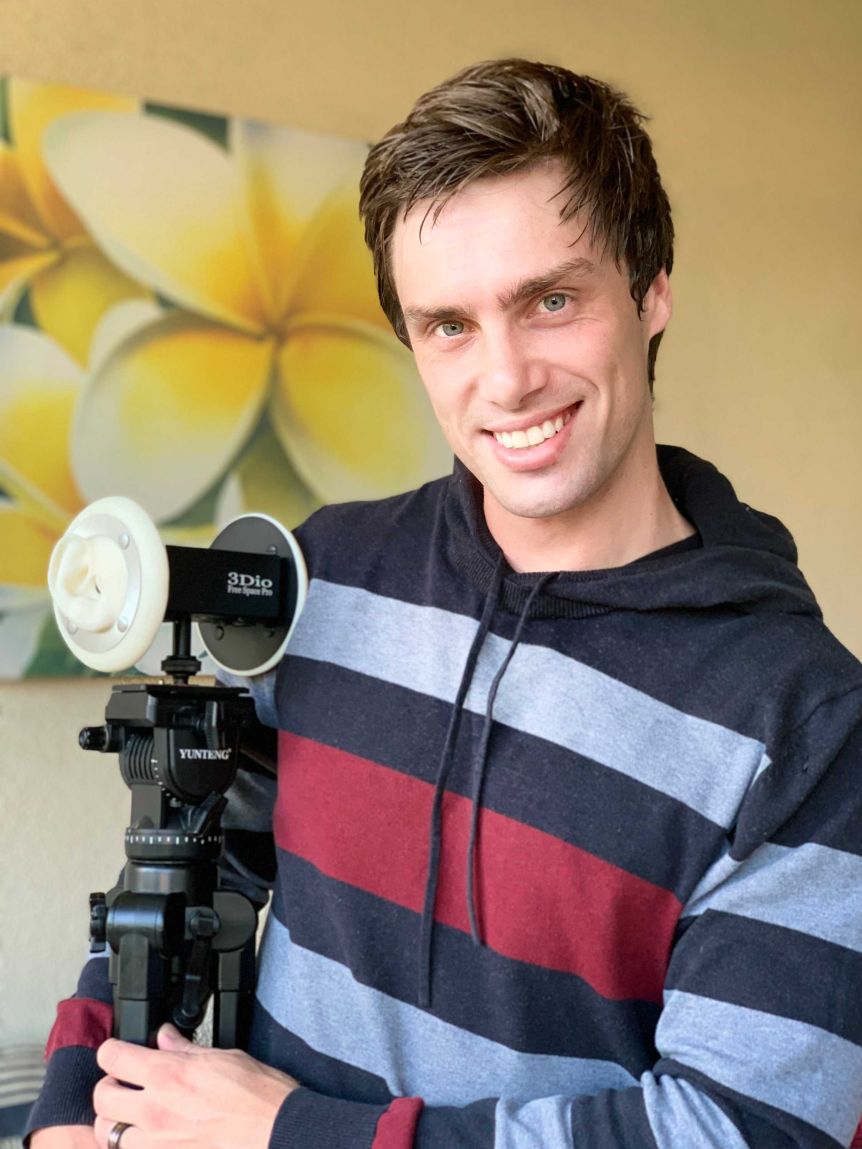YouTube and TikTok can be tools in your self-care kit — if you know how to use them
[ad_1]
As the pandemic turned the world on its head, audiences turned to their screens, seeking out video content on everything from baking tutorials and home workouts to “whisper videos”, pimple popping and cleaning.
Callum James Roberts is a Brisbane-based YouTube content creator who specialises in white noise, relaxing music and autonomous sensory meridian response (ASMR) videos or “whisper videos”.

Mr Roberts’ white noise library includes sounds of vacuum cleaners, pedestal fans and showers, while his ASMR videos consist of him opening Pokémon cards and whispering as he does so.
“It’s funny, when any of your friends find out that you whisper on videos it’s just like the weirdest thing to them,” he said.
ASMR is a relatively new concept that YouTube’s Asia Pacific culture and trends lead, Ash Chang, said quickly developed a massive following.
“There were a couple of studies out recently that outlined how the physiological benefits of watching ASMR videos are comparable to meditation or music therapy or mindfulness practice,” Mr Chang said.
Loading…
Mr Roberts said people were seeking out his videos to help tackle feelings of anxiety or stress.
“I suppose that would have been a highly stressful time for people.”
Loading…
Mr Chang said that stress likely impacted people’s sleep as well.
“We know from Google search data and YouTube viewership in general, that people had a hard time sleeping and insomnia was a huge issue for people [in 2020].”
Mr Chang said audiences were turning to all sorts of video content beyond what would traditionally be thought of as calming. These alternatives had a “hidden utility” because some people found them therapeutic.
That content could be anything: virtual walks, slow blogs, tutorials, baking, craft, card shuffling, lo-fi hip-hop, soap cutting or even people making tiny meals in a tiny kitchen.
Loading…
“I think that’s pretty interesting and really subverts what we think of when we think of watching videos: idle time, time not well spent.”
Often these videos show a process from start to finish.
“[It’s] for the same reason that making sourdough was so popular during the pandemic. It’s this orderly path that follows a very specific process and offers us a sense of control and satisfaction in a world where we feel like we have very little control over our external world,” Mr Chang said.
How to balance your viewing diet
Dr Andrew Campbell, a cyberpsychology associate professor at the University of Sydney, agreed that watching certain content could be good for you.
“It’s important to look at what your content is,” Dr Campbell said.
“We really should be looking at the way we balance our lives, not just off-line, but online by using basic principles of whether or not what we’re watching … is productive, or leisure time, or something that is actually filling in time at a time that’s appropriate.
“[Is it] something that will give you new knowledge, relaxation, enjoyment?

So if watching someone unbox a tiny iPhone relaxes you, go right ahead and watch it. It’s when you can’t stop watching that there might be a problem.
eSafety executive manager of education and prevention Sharon Trotter said a similar approach should be taken when determining how much screen time parents allowed their children.
“If you’re a parent, [it’s about knowing] what their limits are, being aware of what they’re watching, who they’re interacting with,” Ms Trotter said.
Loading…
If the amount of screen time is impacting on your or your child’s sleep, work, education or social lives, then it might be time to rethink how much time is too much.
Additionally, Dr Campbell said it was important to recognise research that found screen time before bed could be harmful to your health.
Avoid mindless binge sessions
Much like how people can mindlessly eat when they are stressed or bored, it’s easy to find yourself consuming snack-sized clickbait videos that pop up and automatically play in your feed.
Both Mr Chang and Dr Campbell said it was useful to approach your content consumption like you would a healthy, balanced diet.
“The number one mistake people make is that they can be caught in a binge session,” Dr Campbell said.
“And binge can be good, particularly for leisure time or if you’re stuck on a flight, but if you’re not understanding why you’re binging, you can actually be over-consuming.

Dr Campbell said mindless consumption could lead to a significant loss of time that could feel like it had been wasted.
“Not so much that you’ve missed a deadline or you’ve been procrastinating, but [more like] what is your quality of life when you’ve been watching things without a purpose?”
Dr Campbell suggested setting aside time for when you’ll watch certain content and be deliberate in seeking it out as opposed to clicking on suggested videos.
[ad_2]
Source by [author_name]














